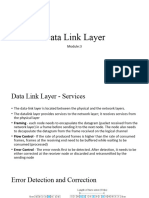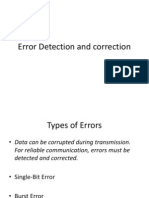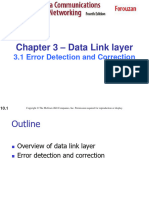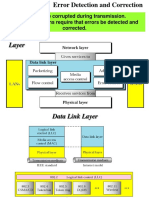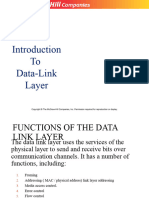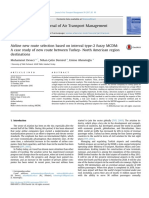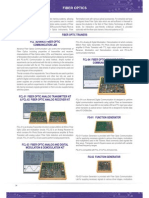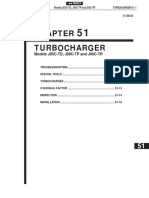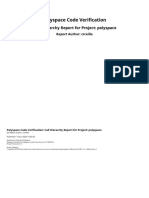0% found this document useful (0 votes)
46 views35 pagesData Link Layer Error Detection - Correction Part B
The document discusses error control techniques used at the data link layer. It describes how error detection and correction works using redundancy, with techniques like parity checks and cyclic redundancy checks (CRC). Parity checks can detect single-bit errors by adding an extra parity bit. CRC is a more advanced error detecting code that uses a cyclic code to generate a checksum over the data, allowing it to detect multiple bit errors. The receiver performs the same CRC calculation to generate a syndrome for error detection. Positive and negative acknowledgements from the receiver provide feedback to the sender for reliable data delivery.
Uploaded by
Ayaz AzeemCopyright
© © All Rights Reserved
We take content rights seriously. If you suspect this is your content, claim it here.
Available Formats
Download as PPTX, PDF, TXT or read online on Scribd
0% found this document useful (0 votes)
46 views35 pagesData Link Layer Error Detection - Correction Part B
The document discusses error control techniques used at the data link layer. It describes how error detection and correction works using redundancy, with techniques like parity checks and cyclic redundancy checks (CRC). Parity checks can detect single-bit errors by adding an extra parity bit. CRC is a more advanced error detecting code that uses a cyclic code to generate a checksum over the data, allowing it to detect multiple bit errors. The receiver performs the same CRC calculation to generate a syndrome for error detection. Positive and negative acknowledgements from the receiver provide feedback to the sender for reliable data delivery.
Uploaded by
Ayaz AzeemCopyright
© © All Rights Reserved
We take content rights seriously. If you suspect this is your content, claim it here.
Available Formats
Download as PPTX, PDF, TXT or read online on Scribd
/ 35











